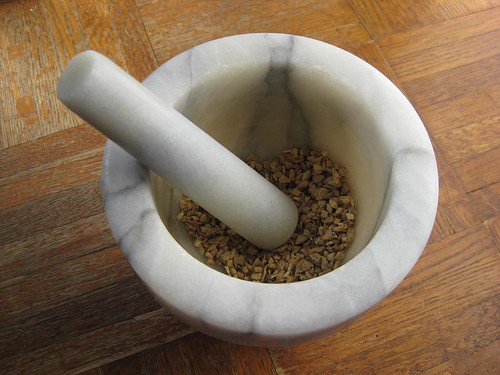Of course I had to make gingerbread men for Christmas. You can’t be halfway through a book on gingerbread and then pass up the obvious opportunity to bake it; it simply wouldn’t be allowed. And, of course, I’m no longer happy with the recipes I had at hand. So I came up with a recipe with a genuinely historical flavor but the tenderness and richness we expect from a Christmas cookie.
Brandy-orange ginger cookies: A semi-historical mashup
This recipe started as a historical reenactment and turned into an attempt to see how close I could get to my own Platonic ideal of a cookie while staying within the spirit of antebellum cuisine. After a few tries I got something I was pretty happy with, and this one you can make for your friends without having to explain that it was part of some guy’s research project.
Crisp gingerbread biscuits
There are countless recipes for gingerbread in 19th-century cookbooks, most simply called “gingerbread” (or, to distinguish them, Gingerbread No. 1, Gingerbread No. 2, and so on), but most of the recipes fall into a few types. There’s soft gingerbread, which is what we’d call a cake. There’s “common gingerbread,” which is typically a soft cookie and always contains molasses — which is what made it “common,” molasses being cheaper than even brown sugar. “Sugar gingerbread,” by contrast, used sugar. And then there’s hard gingerbread, which was designed to keep well.
I assumed that hard gingerbread would give me something like a gingersnap (or, I hoped, like Sweetzels Spiced Wafers). But this recipe, at least, turned out completely different from what I expected — somewhere between a cookie and a cracker, rather like an English biscuit. Which is, as they say, why you play the game.
Early American gingerbread cakes
In researching 19th-century American cooking I started with gingerbread — why, exactly, is a long story — and in researching gingerbread I started with Amelia Simmons’ 1796 American Cookery. This was the first cookbook written by an American author and published in America, and although nearly all of the culinary influence is (unsurprisingly) English, there are American touches, such as recipes for cornbread and cranberries.
One American influence on Simmons’ cooking is the use of a chemical leavener, pearlash, for baking.
Pounding ginger
I have been researching historical gingerbread lately, for a probable book project on nineteenth-century American cooking. The first part of the research involves cataloguing recipes. So far I have thirty-eight recipes for gingerbread published in the United States prior to 1832, all neatly stored in a database and assigned appropriate metadata. Don’t panic: I’m not going to tell you all about the metadata. I’m going to tell you about spices.
As a cultural historian I’m interested in the deeper meanings and broader implications of everything, and I know that often people eat what they eat and cook the way they cook because of tradition or philosophy or politics. But as a cook and a craftsman I know that sometimes people have more practical reasons for doing things that are almost impossible to discover unless you actually try to do them. I’m interested in not just inner feelings and amorphous notions but in the sounds and smells and tastes that were the fabric of life in other times and places, the constant movements and sensations without which culture is just a topic for anthropological discourse. It seems to me that if you want to research the history of food, you need to get in the kitchen.
So I started baking gingerbread.
